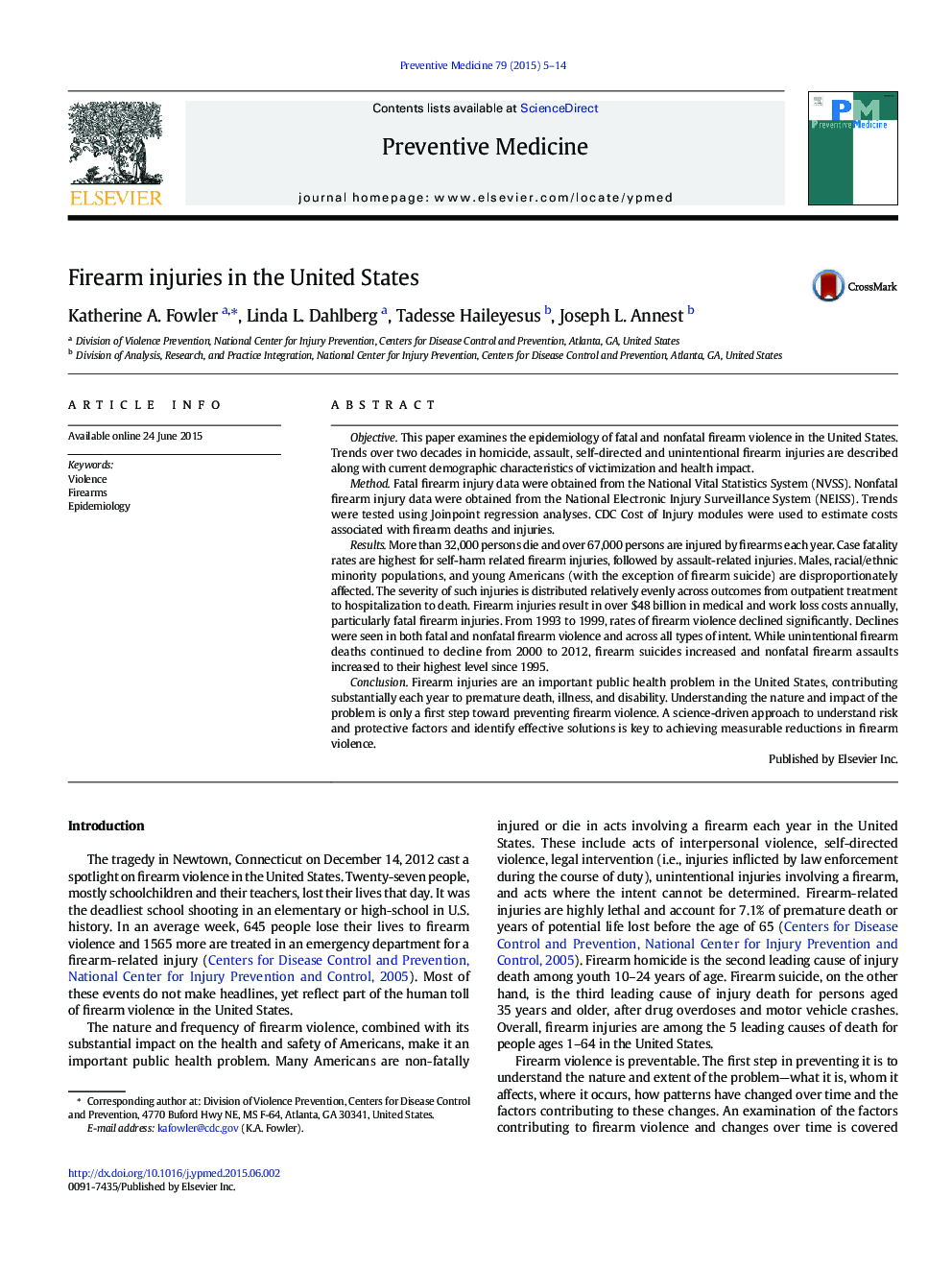| کد مقاله | کد نشریه | سال انتشار | مقاله انگلیسی | نسخه تمام متن |
|---|---|---|---|---|
| 3100363 | 1581635 | 2015 | 10 صفحه PDF | دانلود رایگان |
• We examined the epidemiology of fatal and nonfatal firearm injuries in the United States.
• The majority of firearm deaths were suicides (over 60%).
• Males, racial/ethnic minorities and young Americans are disproportionately affected.
• Firearm injuries declined in the 1990s, but firearm suicides and assaults recently increased.
• Nonfatal firearm assaults have increased in recent years to a level not seen since 1995.
ObjectiveThis paper examines the epidemiology of fatal and nonfatal firearm violence in the United States. Trends over two decades in homicide, assault, self-directed and unintentional firearm injuries are described along with current demographic characteristics of victimization and health impact.MethodFatal firearm injury data were obtained from the National Vital Statistics System (NVSS). Nonfatal firearm injury data were obtained from the National Electronic Injury Surveillance System (NEISS). Trends were tested using Joinpoint regression analyses. CDC Cost of Injury modules were used to estimate costs associated with firearm deaths and injuries.ResultsMore than 32,000 persons die and over 67,000 persons are injured by firearms each year. Case fatality rates are highest for self-harm related firearm injuries, followed by assault-related injuries. Males, racial/ethnic minority populations, and young Americans (with the exception of firearm suicide) are disproportionately affected. The severity of such injuries is distributed relatively evenly across outcomes from outpatient treatment to hospitalization to death. Firearm injuries result in over $48 billion in medical and work loss costs annually, particularly fatal firearm injuries. From 1993 to 1999, rates of firearm violence declined significantly. Declines were seen in both fatal and nonfatal firearm violence and across all types of intent. While unintentional firearm deaths continued to decline from 2000 to 2012, firearm suicides increased and nonfatal firearm assaults increased to their highest level since 1995.ConclusionFirearm injuries are an important public health problem in the United States, contributing substantially each year to premature death, illness, and disability. Understanding the nature and impact of the problem is only a first step toward preventing firearm violence. A science-driven approach to understand risk and protective factors and identify effective solutions is key to achieving measurable reductions in firearm violence.
Journal: Preventive Medicine - Volume 79, October 2015, Pages 5–14
